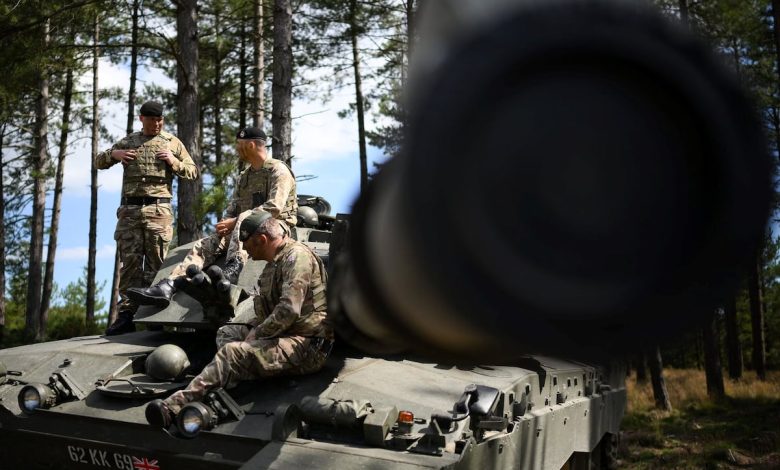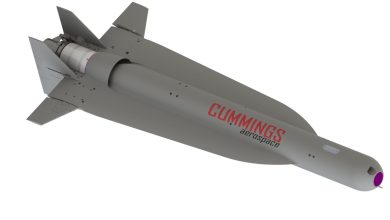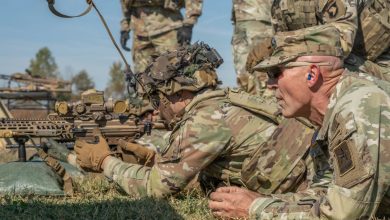Rheinmetall unveils UK’s upgraded Challenger 3 battle tank

PARIS — Rheinmetall unveiled the U.K.’s new Challenger 3 main battle tank to the public at a British Army event this week, with upgraded armor and a 120mm smoothbore cannon for what the company calls the most advanced tank in NATO.
The U.K. is getting its improved tank as allies including France and Germany are still considering whether and how to adapt their heavy armor to evolving battlefield threats including drones, which have been ubiquitous tank killers in the war in Ukraine. The Challenger 3 with the Ajax fighting vehicles and Boxer infantry vehicles is set to form the backbone of the Army’s Future Soldier concept, which seeks to modernize the British forces for beyond 2030.
“The Challenger 3 will bring unmatched lethality to future battlefields,” the U.K. Ministry of Defence said in a video posted on X, formerly Twitter. “Alongside Ajax and Boxer, Challenger 3 will form the British Army’s future fleet of armored vehicles.”
Rheinmetall is upgrading the tank in a joint venture with BAE Systems, after buying 55% of the BAE business that supplies combat vehicles to the British Army in 2019. The Rheinmetall BAE Systems Land (RBSL) joint venture signed a £800 million contract (US$1 billion) with the U.K. Ministry of Defence in May 2021 to upgrade 148 Challenger 2 tanks.
Rheinmetall said two Challenger 3 prototypes have already rolled out of the RBSL site in Telford, England, with another six to be delivered in coming months. Testing is underway to validate the performance of the prototypes and make adjustments, before the remaining 140 tanks are built and delivered to the British Army.
The tank was on show at the British Army’s Defence Vehicle Dynamics event at UTAC Millbrook, a land-vehicle proving ground that includes off-road tracks for testing of military vehicles.
The Rheinmetall-BAE joint venture in April last year conducted firing tests of the smoothbore gun, which replaces a rifled cannon that had left Britain the only user of rifled tank ammunition among NATO members. Rheinmetall’s 120mm smoothbore guns are used on tanks including the Leopard 2 and the U.S. Abrams.
RBSL and the U.K.’s Defence Science and Technology Laboratory have developed a modular armor system for the Challenger 3 which the company said is “a step change in survivability” for the tank, with trials successful so far and more planned in 2025.
“The RBSL team is making great strides, with Challenger 3 completing successful non-destructive testing, and further capability trials are to come,” the joint venture’s Managing Director Will Gibby said in a statement. He said the new battle tank is “the most advanced and capable” in NATO.
The upgraded 66-tonne tank, with a crew of four, features 24-hour all-weather sights, engine improvements, a hydro-gas suspension, better communications and increased electrical power that will allow for adding more power-hungry equipment in the future.
The Challenger 3 will further be equipped with the Trophy active protection system from Rafael Advanced Defense Systems, designed to protect against rockets and missiles, after the U.K. tested the system in late 2022.
France and Germany are working on a future battle-tank system dubbed the Main Ground Combat System, though that’s not expected to be ready before the 2040s, and military-vehicle makers Rheinmetall and KNDS showed off competing tank concepts at the Eurosatory defense show in June here that could plug the gap.
Gibby said capabilities used for the Challenger 3 program, including personnel, tools and facilities, are the building blocks needed for “new customers solutions,” and “we look forward to RBSL helping shape the future of military vehicle design and production with international allies.”
Rheinmetall and Finland’s Patria showed off a prototype mortar variant of the Boxer at the British Army event. The armored carrier mounted with Patria’s NEMO 120mm turreted mortar system has a maximum fire rate of 10 rounds per minute and a range of up to 10 kilometers, while able to fire on the move, the companies said in a statement on Sept. 19.
The Boxer mortar variant can provide both direct and indirect fire for greater versatility in combat scenarios, while the turret means operators stay protected, according to Rheinmetall. Patria called the variant “a significant leap” forward in terms of battlefield capabilities.
U.K. firm Babcock, in a partnership with ST Engineering, also presented a 120mm mortar system, consisting of a barrel on a ground plate deployed using a hinged system at the back of a vehicle. The system unveiled at the Army event in Millbrook was developed to “address the urgent requirement” to boost the weaponry of the U.K.’s armed forces, and would be built at the company’s site in Devonport, England, Babcock said.
The Netherlands in June picked BAE’s 120mm mortar system to equip its CV90 armored vehicles. The double-barreled turreted mortar has a maximum range of 13 kilometers, and can fire as many as 16 rounds a minute, with a sustained rate of 6 shells a minute, according to the spec sheet.
Rudy Ruitenberg is a Europe correspondent for Defense News. He started his career at Bloomberg News and has experience reporting on technology, commodity markets and politics.







